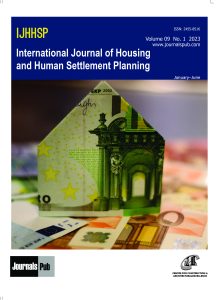Open Access

Vishal Sood

Mona Sood
- Principal Department of Architecture, CT Institute of Architecture and Planning (CTIAP), CT Group of Institutions Punjab India
- Professor Department of Architecture, Lovely School of Architecture and Design (LSAD), Lovely Professional University Punjab India
Abstract
Capacity development (CD) is the process by which organizations strengthen their abilities to perform core functions, deal with challenges of today, plan and make efficient use of resources to achieve their objectives in a sustainable manner. One of the significant principles of CD movement is to build on what already exists; henceforth more attention needs to be drawn to the education sector, where the higher education institutions face the challenge of providing the youths with latest skills, technology, and modern physical learning environments within the limited resources. With ‘aging and expanding’ facilities, there is an ardent need for efficient space management that optimizes the use of existing physical resources and adapts to new approaches to teaching and learning. The aim of this research paper is to analyze the concept of capacity development in architectural institutions with respect to judicious use of its physical resources. For this study, space occupancy and frequency percentage of academic areas of two reputed architectural colleges of Punjab are calculated to evaluate their utilization rate. Furthermore, semi structured interviews with the faculty and students at these colleges are also conducted. Towards the end, the paper recommends few strategies for space optimization in architectural colleges and highlights those physical resources are an asset, which if managed efficiently; the institute can achieve its development goals in a sustainable manner.
Keywords: Capacity development, space management, physical resources, architectural institutes, space optimization.
[This article belongs to International Journal of Housing and Human Settlement Planning(ijhhsp)]

Browse Figures
References
1. Somarriba-Chang, Matilde & Esther, Carballo & Javier, Lopez & Edmundo, Umaña & Francisco, Reyes. (2003). The Basics Of Capacity, Organizational Capacity Development, and Evaluation. In D.H. al. (Ed.), Evaluating Capacity Development. Experiences from Research and Development Organizations around the World (first edition Out of print ed., pp. 19–34). ISNAR, CTA, IDRC.
2. Benedict Faccini, Carmela Salzano. (2011). Capacity Development for Education for All: Translating Theory into Practice. Paris, France: UNESCO. Google book
3. Carolien Jeanette Aantjes, Dave Burrows & Russell Armstrong (2022) Capacity development in pursuit of social change: an examination of processes and outcomes, Development in Practice, 32: 4, 536–550, DOI: 10.1080/09614524.2021.1937547
4. UNESCO. (2018). Issues and trends in education for sustainable development. (J. H. A. Leicht, Ed.) Paris: United Nations Educational, Scientific and Cultural Organization.
5. Space Management. (2015). Retrieved August 2019, from Queensland university of technology: http://www.fmd.qut.edu.au/estate_planning/space_planning.jsp
6. Zahari, W.A., Ibrahim I. (2012). Space Management: A Study on Space Usage Level in Higher Education Institutions. Social and Behavioral Sciences, 47, 1880–1887.
7. Christopher Benninger, 2017, December 14). The Future Of Architectural Education In India – The Crises And Challenge. Retrieved July 2017, from Architecture Live.in: http://www.posts.architecturelive.in/the-future-of-architectural-education-in-india-the-crises-and-challenge-christopher-benninger/
8. Abdullah, Shahabudin., Ali, Hishamuddin., Sipan, Ibrahim. (2012). Benchmarking Space Usage in Higher Education Institutes: Attaining Efficient Use. Journal of Techno-Social, 4 (1), 11–20.
9. Space utilisation: practice, performance and guidelines. (2006, September). Space management group. Retrieved July 2019, from UK Higher Education Space Management Project: http://www.smg.ac.uk/documents/utilisation.pdf
10. Tom Bel (2020). Why is space utilization important and what is the relationship with space occupancy? Retrieved March 2018, from Irisis True Occupancy: https://www.trueoccupancy.com/ blog/why-is-space-utilization-important.

International Journal of Housing and Human Settlement Planning
| Volume | 8 |
| Issue | 2 |
| Received | April 28, 2022 |
| Accepted | July 2, 2022 |
| Published | January 7, 2023 |

